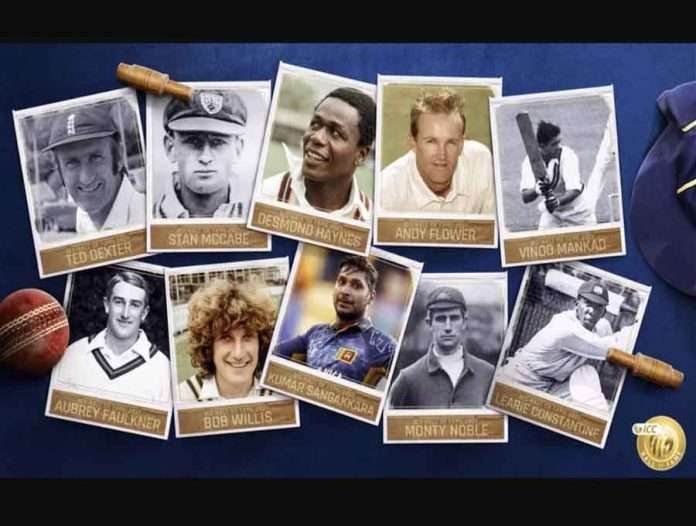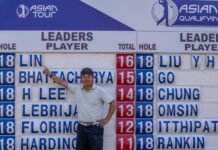
Former India all-rounder Vinoo Mankad has been named among the ten ICC Hall of Fame special inductees. The inductions will coincide with the ICC Test Championship Final. The inaugural match to decide the ICC World Test Champion will be played between India and New Zealand at the Rose Bowl, Southampton, from June 18 to 23.
The International Cricket Council (ICC) has on Sunday announced a special edition to induct 10 cricket icons into the ICC Hall of Fame. This will mark the historic moment of Test cricket – the inaugural ICC World Test Championship Final.
The special inductions will extend the ICC Hall of Fame club to 103 members.
The new inductees have been separated by five different eras of the history of Test cricket. Mankad features in the post-war era with English legend Ted Dexter.
Here are the 10 inductees:
EARLY CRICKET ERA (Prior to 1918)
- Aubrey Faulkner. The pioneer of googly played 25 Tests, scoring 1,754 runs at 40.79 for South Africa. He also took 82 wickets at 26.58. Faulkner was the only man to head both the ICC Batting and Bowling rankings in Test cricket. He was one of the greatest all-rounders and later one of the best coaches. He was a part of the famous ‘googly quartet’ that so characterised South African cricket in the first decade of the 20th century and he peaked with the bat in the 1910-11 series in Australia when he made 732 runs in the five Tests.
- Monty Noble. One of the greatest Australian allrounders played 42 Tests, scored 1,997 runs at 30.25, took 121 wickets at 25.00. He is still the fastest from that country to achieve the 1,000 run / 100 wickets Test double. He captained Australia in 15 Tests. A true all-rounder, Noble was a banker and a qualified dentist outside of being a prolific cricketer of that time.
INTER-WAR ERA (1918-1945)
3. Sir Learie Constantine of West Indies played 18 Tests, scored 635 runs at 19.24, took 58 wickets at 30.10, and can be considered the first great West Indian all-rounder, playing with a flair and freedom that was decades ahead of his time. He was a champion not only amongst players but for his people too in their political and legal fight against racial discrimination. He was also the first black member of the House of Lords.
4. Stan McCabe of Australia played 39 Tests, scored 2,748 runs at 48.21, took 36 wickets at 42.86, and was a right-handed batsman of the highest class, he played three memorable innings and defied the “Bodyline tactics” that were predominant at the time within the England camp with 187 not out at Sydney. He further struck an unbeaten 189 at Johannesburg in 1935 and then 232 in less than four hours at Nottingham in the 1938 Ashes Test. He was touted as one of the greatest batsmen of the game by his captain Sir Don Bradman.
POST-WAR ERA (1946-1970)
- Ted Dexter of England played 62 Tests, scoring 4,502 runs at 47.89. He also took 66 wickets at 34.93. He was a superb batsman who combined a firm defence with the ability to destroy any bowling attack off both the front and back foot. He was an effective wicket taker with his medium-fast seam bowling and later in life served as England’s Chairman of Selectors. He also played an influential role in developing what is today’s MRF Tyres ICC Player Rankings.
- Mankad, regarded as the best Indian all-rounder of his era, played 44 Tests, scoring 2,109 runs at 31.47. He also took took 162 wickets at 32.32. Mankar was an opening batsman and slow left-arm orthodox bowler. His most famous feat was against England at Lord’s in 1952 when he scored 72 and 184 and bowled 97 overs in the match. He is one of only three cricketers to have batted in every position during his Test career. In later life, he also coached another legendary cricketer and fellow ICC Hall of Fame member from his country, Sunil Gavaskar in Mumbai, India.
“Vinoo Mankad’s legacy has been to tell the aspiring Indian cricketer to believe in oneself. He was a great proponent of self-belief. He was the one who kept saying to me that you need to keep scoring runs and keep at it. When you get a 100 let that knock on the selector’s door. If it is unheard, then score that double hundred and let that knock be even louder. You can have the best technique, but if you do not have the temperament to support it you will not succeed, you have to keep hanging in there and have that self-belief. That was the greatest lesson I learnt from him,” said Gavaskar.
ODI ERA (1971-1995)
- Desmond Haynes of the West Indies played 116 Tests, scored 7,487 runs at 42.29 and was one half of the most prolific opening batting partnership in Test history alongside Gordon Greenidge. He was capable of some destructive innings and combined impeccable timing with power in his stroke making and has played four ICC World Cups in that era.
- Bob Willis of England played 90 Tests taking 325 wickets at 25.20 and spearheaded the English bowling attack during some of their most memorable moments during this period. Standing two metres tall, he could make the ball bounce awkwardly on most pitches and possessed an excellent yorker and bouncer, both of which he used to great effect over the course of his career. His greatest triumph was the famous eight for 43 that beat Australia at Headingley in 1981 and after retirement became a popular, and often polarising member of the Sky TV commentary box.
MODERN ERA (1996-2015)
- Andy Flower of Zimbabwe played 63 Tests, scoring 4,794 runs at 51.54, took 151 catches with nine stumpings as a left-handed wicket-keeper batsmen. First Zimbabwe player to be inducted in the ICC Hall of Fame. His grit, determination and will to succeed meant at one point he was ranked number 1 batsman in the world. Andy carried his country’s batting for long periods, setting the record for the highest Test score by a wicketkeeper with an innings of 232 not out against India at Nagpur in 2000. Later, he became a hugely successful coach, leading England to the number 1 spot in the MRF Tyres ICC Test Rankings for Men.
- Kumar Sangakkara of Sri Lanka played 134 Tests, scored 12,400 runs at 57.40, took 182 catches and 20 stumpings, and was grace personified at the crease. Sangakkara ended his career as the most prolific run-scorer his country had ever known, with double-hundreds flowing from his bat with consummate ease. In 2014 he struck 319 and 105 in the same Test match against Bangladesh and in 2017 fell just 16 runs short of striking six successive centuries in first-class cricket.
The special edition ICC Hall of Fame show was streamed LIVE on ICC digital channels and was hosted by Alan Wilkins.
The 10 icons to special edition were picked by the ICC Hall of Fame Voting Academy, comprising living Hall of Fame members, a FICA representative, prominent cricket journalists and senior ICC figures.




